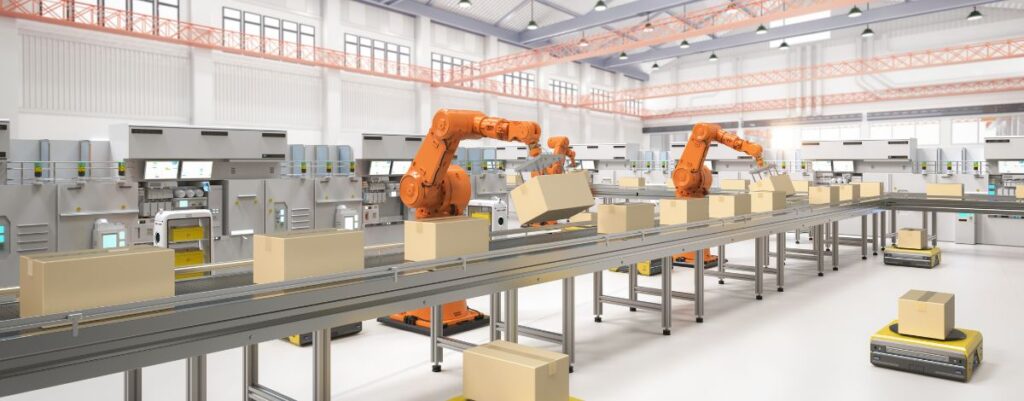
What is a robotic warehouse?
Reading time: < 4 minutesThe warehouse automation in industry and logistics centers is one of the main factors contributing to increase the efficiency and productivity of industrial activity. The robotization of a warehouse allows such automation with a very reduced or minimal intervention of human operators, which entails a series of advantages.
Robotization in a warehouse has proven to be a competitive differentiator whose advantages range from reducing the need for direct operator participation, reducing human error, to achieving more efficient and faster continuous flow work systems. However, there are also important aspects to consider in the robotization process of a warehouse.
We will start by highlighting what are some of the main advantages of a robotic warehouse:
Reduce or minimize direct operator intervention. Currently, operators are still necessary in the processes and as controllers of robotization systems. The tendency is to keep your intervention minimal.
Increases the speed of processes, reducing operational time.
It allows to optimize the spaces, reducing the space destined to the work of operators and increasing the storage capacity or load of the warehouse.
The robotized and automated tracking systems allow processes controlling depth of the stock of the warehouse and the traceability of all procedures and movements therein are carried out. All these records in turn allow subsequent analysis to identify control points and points where efficiency can be improved.
As we have mentioned, a robotic warehouse needs some requirements for its implementation. Therefore, a prior analysis of the needs and characteristics of the warehouse for its automation and robotization must be carried out.
In the process of implementing a robotic warehouse, a preliminary study must be carried out of those repetitive processes in the warehouse that can be carried out in an automated way by robots.
Another important aspect is that robotization requires a high degree of standardization of the elements: sizes of packages or pallets, load weights, types of movements. Robotization, therefore, will most likely require operational changes in the company that must be clearly established and studied.
Specific training of personnel is needed to work in a robotic warehouse. Both of the automated system control operators and those who act in non-robotic processes.
Robotization requires a heavy investment in structures, control systems and, as mentioned, in training personnel involved. All of these are aspects that must be thoroughly assessed.
Systems automation and robotization depend on two basic aspects: the structures and mechanized movement systems (roller conveyors, elevators, belt conveyors, conveyor pallets, etc.) as well as computer control systems (software control and management).
So, we can conclude that to achieve the efficiency and increased performance of a robotic warehouse requires a prior analysis of the warehouse’s operational characteristics and the appropriate selection of a consolidated company in the sector for the manufacture of structural elements and mechanics and the implantation of the system.



